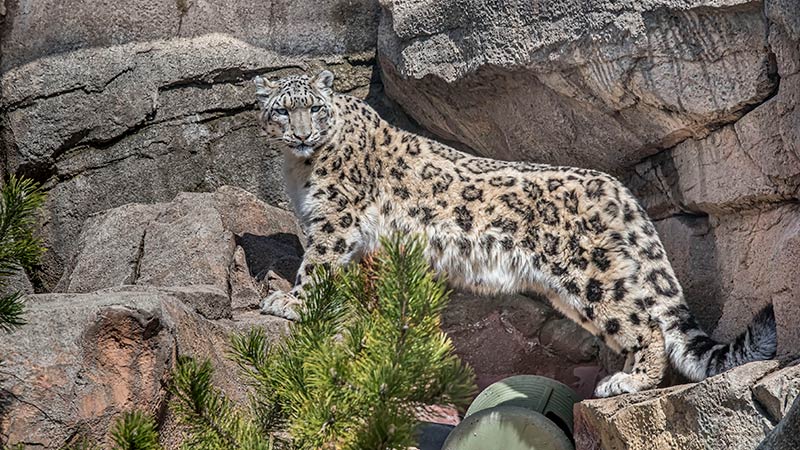Living in Wisconsin, we enjoy the beauty and scenery changes that come with transitions from spring to summer, summer to fall and fall to winter. As the seasons and temperatures change, it affects the way animals are cared for, so throughout the year, animals who are visible to guests change seasonally. Animals from colder regions, like snow leopards from Nepal and red pandas from the Himalayas, prefer spending time in their outdoor habitats during the cooler temperatures.

Animals visible in their habitats may change from day to day, based on weather conditions, reproductive cycles, and necessary veterinary procedures.
For the best experience:
Visit the indoor buildings: Apes of Africa, Primates of the World, Aviary, Aquatic & Reptile Center, Big Cat Country, Elephant Care Center, Giraffe Barn, and the Dairy Barn.
Explore the North American species: Caribou, elk, harbor seals, and North American river otters. These animals are more active in cooler weather.
The larger outdoor habitats are for African species like kudu, waterbuck, impalas, and gazelles. These African hoofstock are only outside with the temperature above 45 degrees Fahrenheit, and their habitats are clear of ice.
Throughout the entire year, factors like precipitation, wind, cloud cover, animal location, or possible stress may impede the viewing of these animals, but as a general guideline:
Gorilla & Bonobo: Outside when 40 degrees Fahrenheit and above with access to a behind the scenes area
Orangutan: Outside when 50 degrees Fahrenheit and above with access to a behind the scenes area
Siamang, Colobus & Spider Monkey: Outside when 50 degrees Fahrenheit and above with access to a behind the scenes area
Japanese Macaque: Outside when 15 degrees Fahrenheit and above for a limited time and access to a behind the scenes area
Lemur: Outside when 60 degrees Fahrenheit and above with access to a behind the scenes area
Flamingo: Outside when 35 degrees Fahrenheit and above, until ice forms on the pond, then inside and behind the scenes for the winter
Whooping Crane: Outside year-round
Crested Screamer: Outside until overnight temperature dips below freezing; occasional access outside through the fall when above 40 degrees Fahrenheit
Southern Ground Hornbill – American White Pelican – East African Black Crowned Crane – Rhea: Outside until the overnight temperature dips below freezing; occasional access outside through the fall when 40 degrees Fahrenheit and above
Cinereous Vulture: Outside until the habitat is covered in snow and it becomes treacherous for animal care staff to service; then inside and behind the scenes for the winter, until the snow thaws
Impala Plains habitat: Ostrich – West African Grey Crowned Cranes – Guineafowl: Outside in the fall when above 40 degrees Fahrenheit
The well-being of our animals is our top priority. They’re provided with engaging opportunities to encourage natural behaviors and to explore and interact with their surroundings. They also have the freedom to choose how and where they spend their time.
© 2025 Milwaukee County Zoo. All Rights Reserved | Privacy Policy